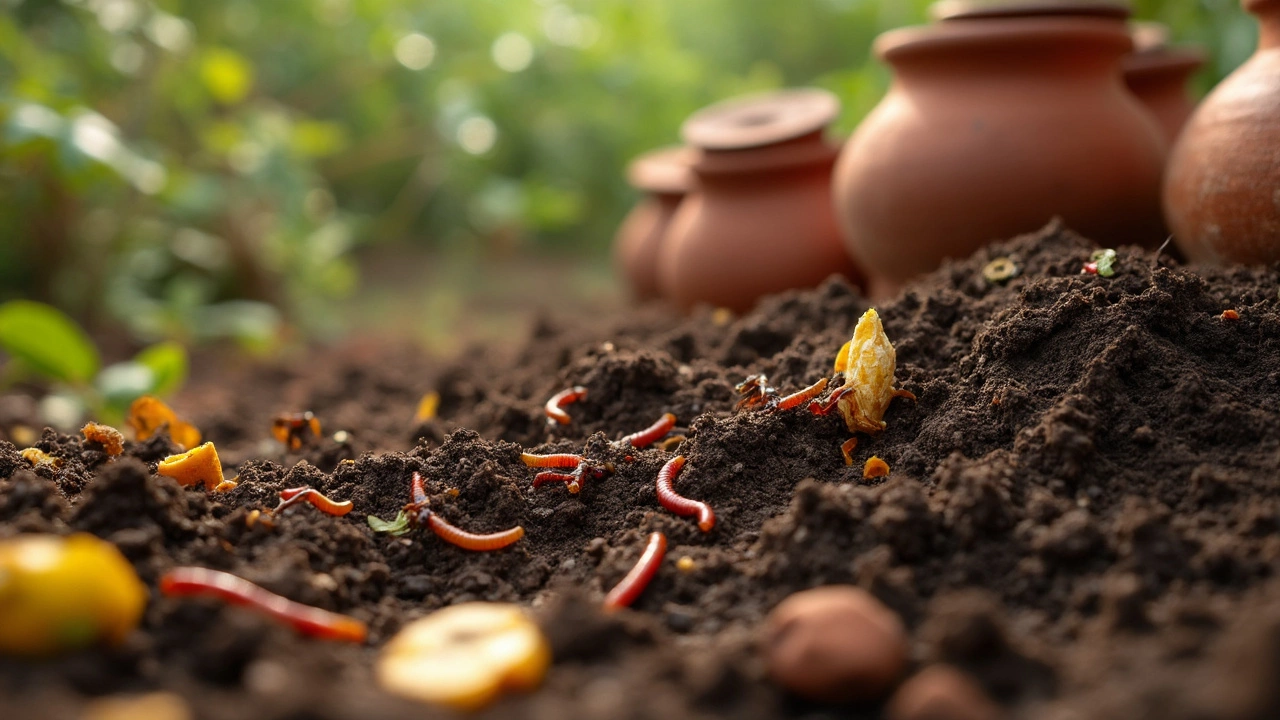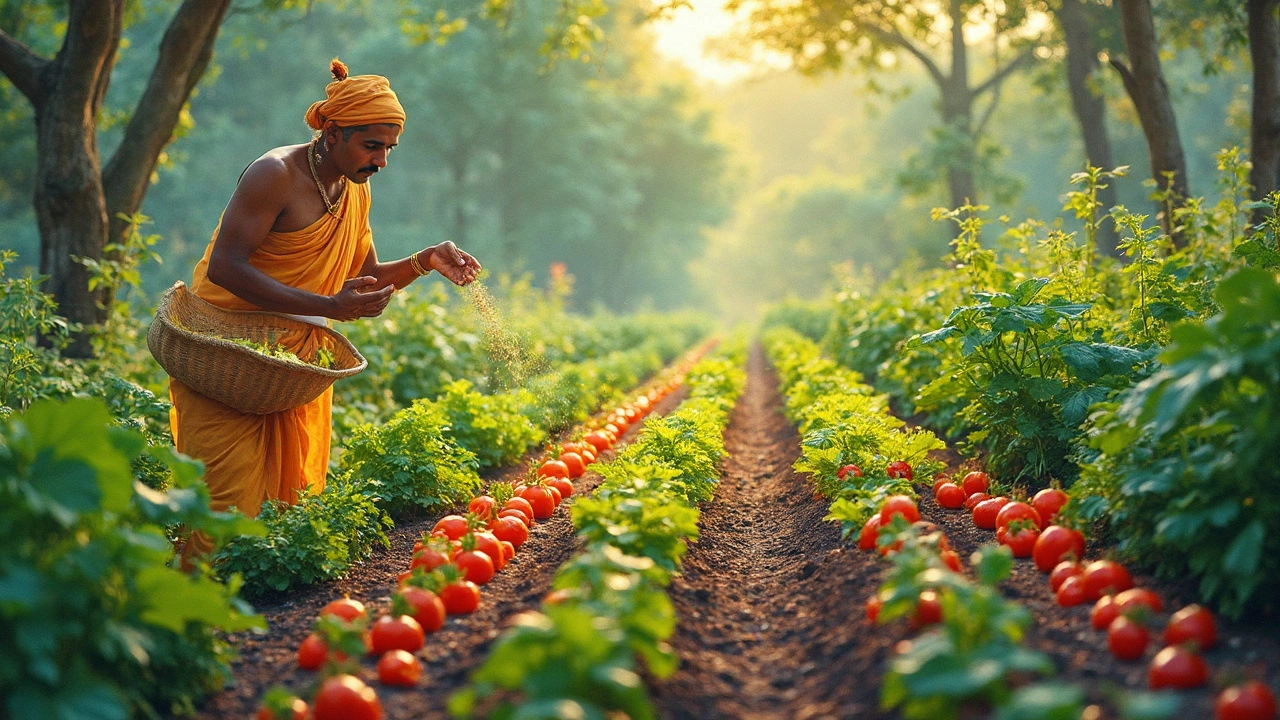When you're thinking of transforming your vegetable garden into a thriving oasis, the first step is knowing what your soil needs. Not all soil is created equal, and every garden plot brings its unique challenges. So how do you tackle this head-on? It starts with understanding your soil’s current condition and what it might lack.
Dig a little deeper—literally and metaphorically. Get a feel for its texture. Is it sandy, clay-like, or somewhere in between? The secret to a great garden lies in adding the right amendments that cater to these specifics.
Now, let’s talk about compost. It's like a multivitamin for your plants, providing a balanced dose of nutrients while boosting soil structure. Toss in kitchen scraps, grass clippings, and leaves into your compost pile, and you’re well on your way to creating a nutrient-rich powerhouse. The tiny organisms breaking down this organic matter are the real stars, enriching the soil for your veggies.
Stay tuned as we explore more about unleashing the magic in your vegetable garden soil. Happy gardening!
- Understanding Your Soil
- Benefits of Compost
- The Role of Organic Matter
- Natural Fertilizers
- Soil Testing Tips
- Sustainable Gardening Practices
Understanding Your Soil
If you're aiming for that lush veggie garden, nailing the soil situation first is a must. As any seasoned gardener will tell you, good veggies start with great soil. But how can you tell if your garden soil is ready to support a thriving vegetable garden?
Start by checking the texture. Most garden soils are either sandy, clay, or loamy. Loamy soil is your best friend. It holds moisture and nutrients well, but drains efficiently, preventing roots from waterlogging. Sandy soil allows water to wash through quickly, making it harder to retain nutrients. On the flip side, clay soil retains water and nutrients but might suffocate roots if there’s too much of it.
Feeling adventurous? Try a DIY soil jar test. Scoop up a sample of soil and drop it into a jar filled with water. Shake it up and leave it for a day. You'll see layers form, revealing the percentage of sand, silt, and clay. Pretty cool, right?
Don’t forget about pH level checking—veggies generally thrive in soils with a pH between 6.0 and 7.5. Testing kits are easy to find at garden centers, or take a sample to your local extension service for detailed info.
Once you've got the dirt on your dirt, you know where your soil improvement efforts need to focus. It’s all about balancing those nutrients and structure to grow the best veggies possible.
Knowledge is power! Dive deeper into your soil's health with nutrient testing, often revealing deficiencies you can correct with targeted amendments. Now, you're surely on the path to a bountiful vegetable garden.
Benefits of Compost
If you've ever wondered why experienced gardeners rave about compost, you're about to find out. Compost is like the superfood of the soil world, packed with nutrients and other goodies that do wonders for your vegetable garden.
First off, compost improves soil structure. Imagine it as a soft, fluffy mix that makes your soil nice and crumbly rather than hard and compacted. This is great news for your plant roots because they can easily spread out and access more nutrients and water.
Speaking of nutrients, compost is loaded with them. From nitrogen, phosphorus, to potassium, it’s all in there. And the best part? These nutrients are released slowly, which means they stay around longer, feeding your plants for weeks or even months. No more constant trips to the store for synthetic fertilizers!
Compost also sparks life in your garden by boosting beneficial microbes. These tiny organisms break down organic matter and help make nutrients more available to plants. It’s like having an unseen army working on your behalf, 24/7.
- Boosts soil fertility by adding essential nutrients.
- Improves soil structure for better root growth.
- Encourages beneficial microbial activity.
- Helps retain soil moisture, cutting down on watering needs.
One bit of science backs this up. According to the U.S. Department of Agriculture, using compost as a soil amendment can increase crop yields by up to 20%. Not too shabby for a pile of organic waste!
If you're not already composting, here's your sign to start. Your soil improvement efforts in your veggie patch will thank you big time!
The Role of Organic Matter
Organic matter is like the lifeblood of your garden soil, especially in a vegetable garden. It plays a critical role in managing moisture, improving structure, and keeping your plants happy and healthy. Seriously, it does wonders for your soil improvement efforts.
At its core, organic matter is basically decomposed plant and animal material. This rich material is teeming with microorganisms that break down nutrients, making them more available to plants. Think of organic matter as the magic ingredient turning basic soil into a fertile paradise.
So how do you get this goodness into your garden? Start with adding materials like leaves, straw, and even manure. It's as simple as spreading a layer on top of your soil or mixing it in. Over time, this will enhance moisture retention, especially crucial during hot, dry spells. Plus, it helps prevent soil compaction, something your plants will definitely appreciate.
If you're curious about numbers, here’s a quick glance at how organic matter can work wonders:
| Benefit | Impact on Soil | Vegetable Yield Increase |
|---|---|---|
| Water Retention | Up to 20% higher | 10-15% |
| Soil Fertility | Increases nutrient availability | 20% more produce |
| Soil Structure | Enhances aeration | 15% more efficient root growth |
Organic matter doesn't just improve soil quality; it also promotes sustainable gardening practices which are friendlier for our environment. It’s like setting up a circular economy right in your backyard—reduce waste, reuse what you can, and recycle all that good stuff back into the earth.
Kickstarting a healthy soil ecosystem is a game-changer. With each season, as your soil gets healthier, your vegetables will be more vibrant and robust. Plus, investing in organic matter cuts down the need for synthetic fertilizers, keeping your garden natural and toxin-free.

Natural Fertilizers
Let's dive into natural fertilizers—a fantastic way to give your vegetable garden the nutrient boost it needs. Not only are they effective, but they're also eco-friendly. Two popular choices you’ve probably heard of are bone meal and fish emulsion. These guys pack a serious punch when it comes to promoting growth.
Bone meal, high in phosphorus, is excellent for strong root development. It’s especially useful during the early stages of your plants' life. Just sprinkle some around your plants – about a teaspoon per plant – and you’re set. If you’re growing root veggies like carrots or potatoes, they’ll thank you for this.
On the other hand, fish emulsion acts fast, catering to the above-ground growth with its abundance of nitrogen. This liquid fertilizer is best applied as a foliar spray, ensuring your veggies are getting that nutrient goodness directly.
Here’s a quick guide to using natural fertilizers effectively:
- Know Your Plants: Some vegetables like tomatoes are heavy feeders and will benefit more from fertile soil.
- Right Timing: Apply during active growth periods to maximize benefits.
- Don’t Overdo It: Too much of a good thing can be harmful. Stick to the recommended quantities.
For those into DIY, you could even consider creating your own weed and feed solution using comfrey leaves. Simply break them down in water for a few weeks, and you've got yourself a potassium-rich tonic perfect for flowering and fruiting stages.
These small efforts go a long way in ensuring your gardening ventures are a success, keeping your plants—be they greens among your salads or the sturdy tomatoes—healthily nourished. Remember, healthy soil equals healthier plants!
Soil Testing Tips
Getting to know your soil is like getting to know a new friend before inviting them over for dinner. It’s all about testing. Whether you're a newbie gardener or a pro, soil testing is a crucial step to make your vegetable garden flourish. It tells you what your soil has and what it lacks.
So, where do you start? Grab a testing kit from your local garden center or online. They’re easy to use and incredibly helpful. If you're feeling extra particular, sending your soil to a lab will give you the most accurate breakdown, covering everything from pH levels to nutrient contents.
Once you have your kit, here’s a step-by-step guide to sampling that soil:
- Choose Your Spots: Collect samples from a few different areas of your garden to get an even picture.
- Dig Deep Enough: Aim for about 6-8 inches deep because that's where most veggie roots hang out.
- Mix It Up: Combine the soil from various spots in a clean bucket to get a composite sample.
- Dry It Out: Spread the soil on a newspaper and let it air dry. Moisture can skew results.
- Use the Kit: Follow the instructions on your testing kit. It's usually about adding a scoop of soil and some solution into a container.
The results will tell you the pH level and nutrient availability, showing you if your soil is acidic, alkaline, or just right. Aim for a pH of 6.0-7.5 for most veggies, as they thrive in slightly acidic to neutral soil. Add compost or lime to adjust it accordingly.
Not only does testing save you time and money in the long run, but it also ensures that all your effort leads to a bountiful harvest. Happy gardening!
Sustainable Gardening Practices
When you're aiming to create a vegetable garden that’s not only productive but also environment-friendly, sustainable gardening practices are the way to go. These practices not only help maintain the health of your soil but also contribute to a healthier planet.
First up, consider crop rotation. This age-old technique isn't just for farmers; it’s a great way to manage soil fertility and avoid pest buildup in your vegetable garden. By switching up plant families each season, you’re essentially giving your soil a natural break from specific nutrient demands and pests.
Another nifty trick is mulching. A nice layer of organic mulch, such as straw or wood chips, can save you water by minimizing evaporation. It also helps control weeds and add organic matter back to the soil as it breaks down—a win-win for your soil improvement efforts.
Let’s talk about water usage. Drip irrigation systems are lauded for delivering water directly to the plant roots, reducing waste by up to 70%. If that seems like an investment, simple practices like early morning watering can also make a notable difference in water conservation.
And then there’s companion planting. Pairing certain plants together can naturally deter pests and enhance growth. For instance, planting marigolds alongside your tomatoes can ward off nematodes, and basil near peppers can boost flavor and repel insects.
If you're keen on making every drop count, consider setting up a rainwater collection system. It’s an effective way of harnessing nature’s gift, cutting down on tap water usage, and saving on your bill.
Lastly, embracing organic practices by using natural pest control methods helps keep your garden ecosystem in balance. Ladybugs, for example, can help manage aphid populations, while neem oil can serve as an organic pesticide.
Here’s a quick look at how these practices align with sustainable benefits:
| Practice | Benefit |
|---|---|
| Crop Rotation | Improves soil health, reduces pests |
| Mulching | Conserves water, adds organic matter |
| Drip Irrigation | Saves water by 70% |
| Companion Planting | Deters pests, promotes growth |
| Rainwater Harvesting | Reduces water bills |
By incorporating these sustainable gardening practices, you’re not just enhancing your garden's productivity but also treading lightly on the earth. Give some of these strategies a try; your garden and the planet will thank you for it!

